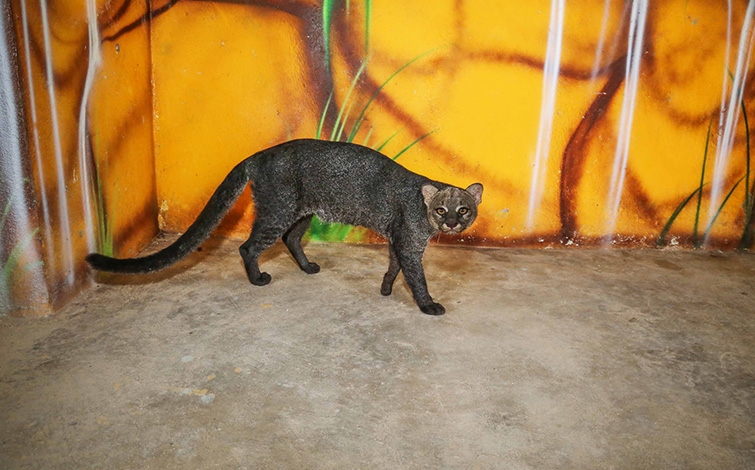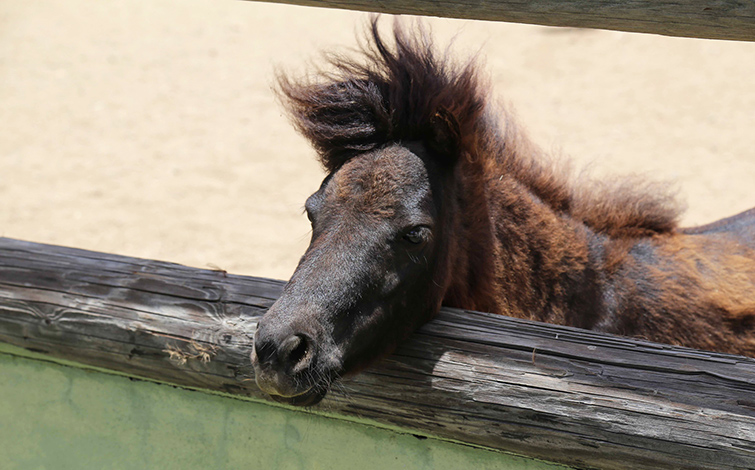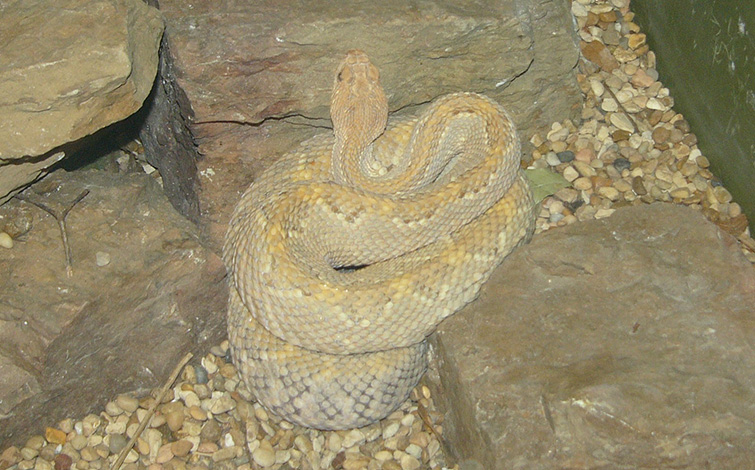Jaguarundi
The Jaguarundi, also called eyra cat, is a small-sized wild cat native to Central and South America. In 2002, the IUCN classified the jaguarundi as ‘Least Concern’, although they considered it likely that no conservation units beyond the mega reserves of the Amazon basin could sustain long-term viable populations. The jaguarundi is found from southern Texas and coastal Mexico in the north, through Central and South America east of the Andes, and as far south as northern Argentina. Its habitat is lowland brush areas close to a source of running water, and may include any habitat from dry thorn forest to wet grassland. While commonly found in the lowlands, they have been reported at elevations as high as 3,200 m (10,500 ft). Jaguarundis also occasionally inhabit dense tropical areas.
The jaguarundi has short legs, an elongated body, and a long tail. The ears are short and rounded. The coat is not spotted and uniform in color, with, at most, a few faint markings on the face and underside. The coat can be either blackish to brownish-grey (grey phase) or foxy red to chestnut (red phase); individuals of both phases can be born in the same litter. Jaguarundis are primarily diurnal, being active during the day rather than evenings or night. They are comfortable in trees, but prefer to hunt on the ground. They will eat almost any small animal they can catch, typically catching a mixture of rodents, small reptiles, and ground-feeding birds. They have also been observed to kill larger prey, such as rabbits, and opossums; relatively unusual prey include fish and even marmosets. Like many other cats, they also include a small amount of vegetation and arthropods in their diets.
- Length: 53 to 77 cm (21 to 30 inch)
- Tail: 31 to 60 cm (12 to 24 inch)
- Weight: 3.5 – 9.1 (7.7.to 20 lbs)
- Tail length: 90 – 110cm (35 – 43inch)
- Life span: 12 – 18 years
- Diet: small reptiles/ rodents/ ground-feeding birds/ fish/ vegetation
- Gestation: 70-75 days
- No. offspring: 1-4







